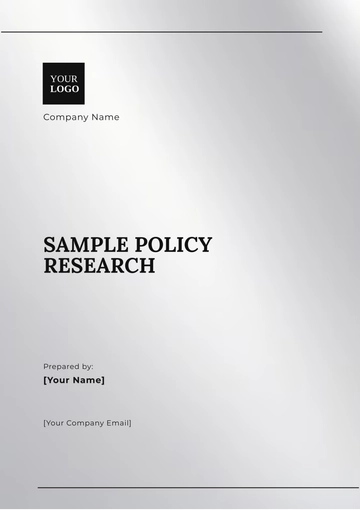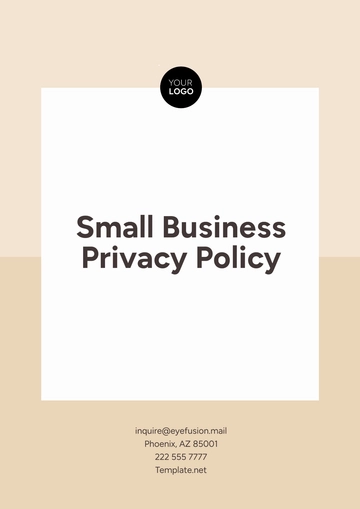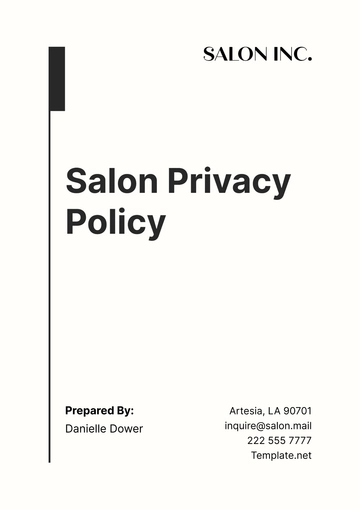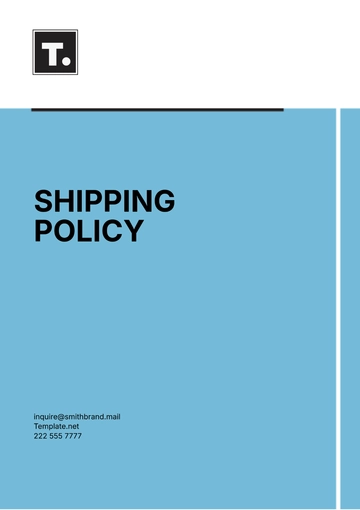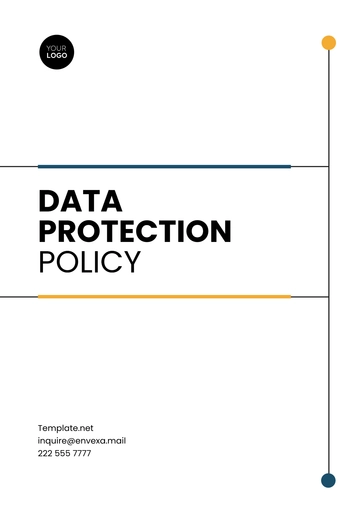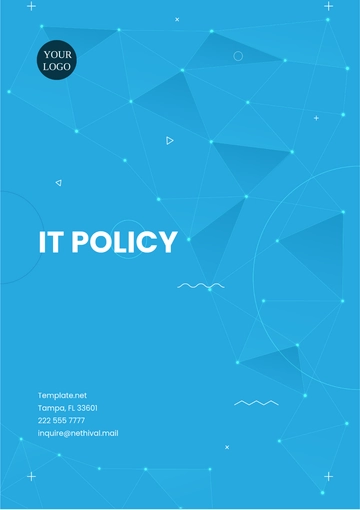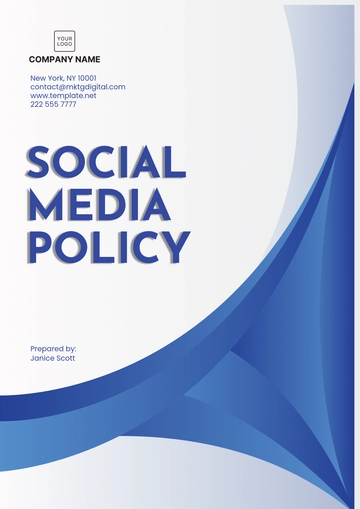Free Sales Collateral Policy & Procedure
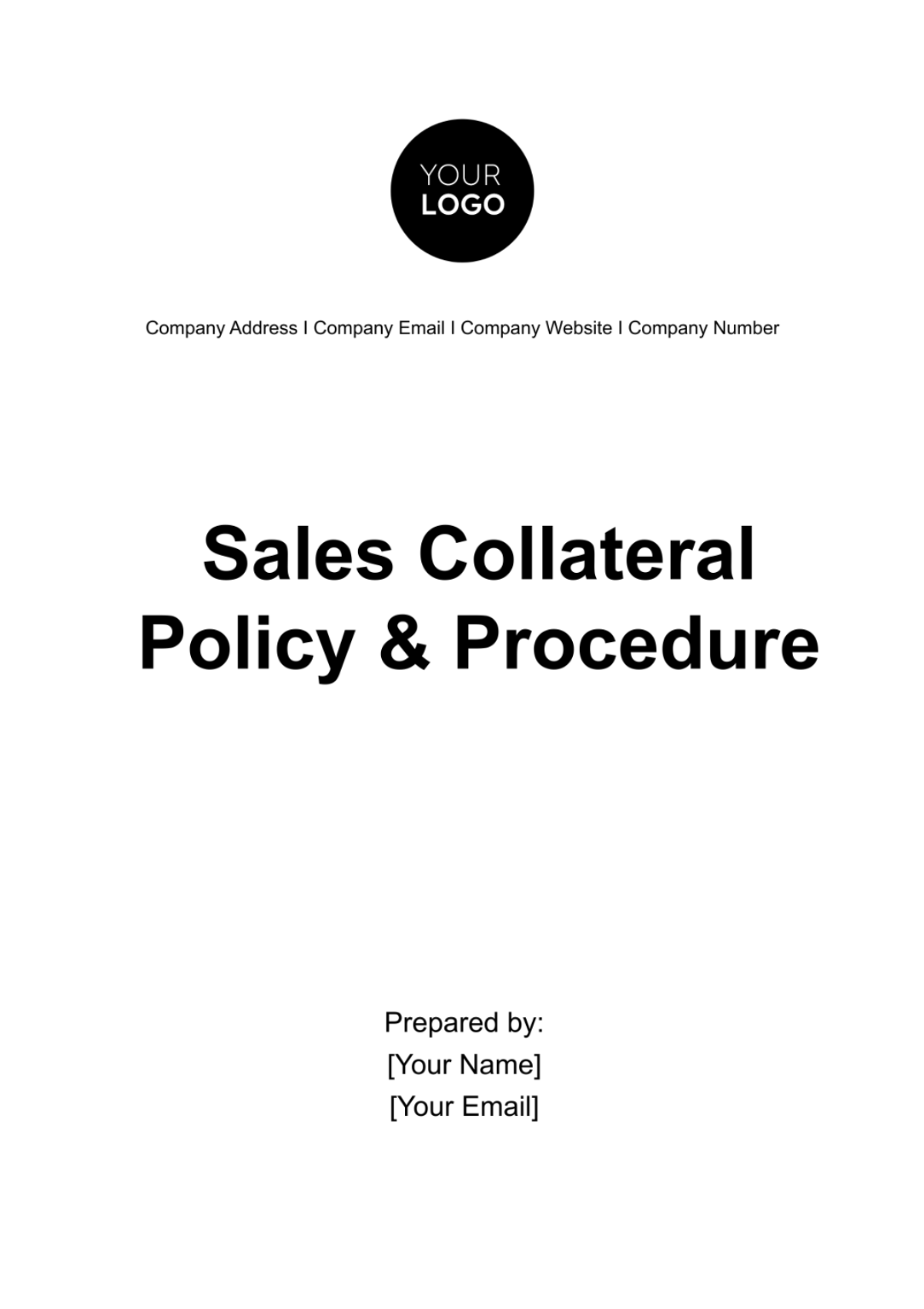
I. Introduction
At [Your Company Name], we understand that the effective utilization of sales collateral is paramount to our sales and marketing endeavors. This Sales Collateral Policy and procedure serves as the cornerstone for guiding the development, distribution, and management of sales collateral materials. Our commitment to maintaining a robust sales collateral strategy underlines the importance of these materials, which encompass a wide range of resources, including brochures, product datasheets, case studies, presentations, and digital assets, all designed to facilitate communication with potential clients.
The role of sales collateral within our organization extends beyond a mere supporting role—it is a fundamental component of our sales and marketing ecosystem. These materials are pivotal in delivering the right messages and information to our potential clients, allowing us to build strong relationships and drive business growth.
In an ever-evolving business landscape, where the competition is fierce and the information flow is constant, the creation, maintenance, and effective use of sales collateral materials represent a strategic imperative. As such, this policy and procedure framework has been carefully constructed to guide every step of the sales collateral process, ensuring that we maintain consistency, relevance, and professionalism in our interactions with potential clients.
Our commitment to this policy is a testament to our dedication to achieving our sales and marketing objectives. By adhering to these guidelines, we can ensure that our sales collateral materials remain effective tools that support our sales teams, educate our potential clients, and ultimately contribute to the growth and success of [Your Company Name]. This policy is a living document, and we will continuously review and update it to remain aligned with the evolving needs of our organization and the expectations of our clients.
II. Ownership and Accountability
A. Ownership
The ownership of sales collateral within [Your Company Name] is a matter of great significance. It represents the foundation upon which the successful creation, maintenance, and distribution of these materials rest.
The Sales and Marketing Department is the custodian of this vital function. Within this department, the Sales Collateral Manager holds the primary ownership and stewardship of the sales collateral process. This individual, along with a dedicated team, plays a pivotal role in shaping and executing the sales collateral strategy.
The responsibility of the Sales Collateral Manager is multifaceted. They are entrusted with overseeing all aspects of sales collateral management, from inception to distribution. This includes but is not limited to coordinating with content creators, design professionals, and subject matter experts. Through effective cross-functional collaboration, the Sales Collateral Manager ensures that each piece of collateral aligns with our branding, messaging, and the needs of our target audience.
In addition to the ownership vested in the Sales and Marketing Department, there is a shared responsibility for the effective use and management of sales collateral across the organization. While the Sales Collateral Manager oversees the process, all teams, including Sales, Marketing, and Legal, are collectively responsible for adhering to this policy and procedure.
The ownership of sales collateral is not just a matter of authority but one of stewardship. It is a recognition that these materials are essential tools that represent our organization to the outside world. Therefore, it is our shared duty to ensure that they are of the highest quality, accurately reflect our brand, and communicate the right messages to our clients. This ownership extends to the entire organization, and together, we will uphold the standards of excellence and professionalism that [Your Company Name] is known for.
B. Cross-Functional Collaboration
Effective cross-functional collaboration is the cornerstone of our approach to creating and managing sales collateral at [Your Company Name]. We recognize that no single department or team can take full ownership of this critical function. Instead, it is through cooperation and synergy that we can produce the most effective collateral materials.
Cross-functional collaboration involves bringing together professionals from various domains, including Sales, Marketing, Design, Content Creation, and Subject Matter Experts. Each of these teams plays a unique and indispensable role in the creation and management of sales collateral.
Sales Team: Sales representatives are on the front lines of customer interactions. Their valuable insights and feedback provide a critical perspective on what types of collateral materials are needed. They understand the pain points and preferences of our potential clients. Their contributions in identifying specific content needs are invaluable.
Marketing Team: The marketing team contributes by aligning the collateral materials with the broader marketing strategy. They ensure that materials adhere to our branding and messaging guidelines, which are essential for maintaining consistency in our communication.
Design Professionals: Designers bring the visuals to life, making sure that the materials are not only informative but also visually engaging. Their expertise in layout, typography, and graphics elevates the impact of our collateral materials.
Content Creation Team: Content creators provide the substance of our collateral materials. They craft persuasive and informative content that communicates our value proposition effectively. Their expertise in storytelling and messaging is pivotal.
Subject Matter Experts: Subject matter experts contribute their deep knowledge of our products and services. Their insights ensure that the content is accurate, technically sound, and aligned with the unique features and benefits of our offerings.
Cross-functional collaboration is not just a matter of individuals from different teams working together; it is a shared commitment to a common goal. It means breaking down silos and fostering open communication, ensuring that every piece of collateral benefits from the expertise of the entire organization. This collaborative approach is what makes our sales collateral so effective in addressing the diverse needs of our clients.
By valuing and promoting cross-functional collaboration, [Your Company Name] is dedicated to ensuring that our sales collateral materials are not just informative but also resonate with our clients, speak to their pain points, and ultimately contribute to our growth and success in the market. This approach is a testament to our belief that the whole is greater than the sum of its parts.
III. Creation and Approval Process
A. Creation
The creation of sales collateral is a pivotal phase in our sales and marketing strategy at [Your Company Name]. This process requires meticulous planning and execution to ensure that our materials effectively communicate our value proposition to potential clients.
Identifying the Need: The initiation of the creation process often begins with the identification of a need. The Sales and Marketing teams work closely to assess where specific collateral materials would be most beneficial. This process is data-driven, with market research, client feedback, and sales team input helping to pinpoint the exact requirements.
Cross-Functional Collaboration: A key principle guiding the creation process is the active involvement of cross-functional teams. Sales representatives, marketing professionals, content creators, designers, and subject matter experts collaborate to ensure that the material is not only informative but also well-rounded and engaging.
Content Generation: Content is at the heart of every piece of collateral. Our content creators are tasked with crafting compelling and persuasive narratives that convey the unique features, benefits, and value of our products and services. They are guided by the principle of clarity, ensuring that technical information is presented in a way that is understandable to our target audience.
Visual Presentation: The design and visual elements of our collateral materials are equally crucial. Design professionals bring their expertise to create visually appealing layouts, ensuring that our materials are not only informative but also engaging and memorable. They work in alignment with our branding and design guidelines to maintain consistency.
Review and Approval: Rigorous review and approval processes are in place to guarantee the quality and accuracy of the content. The Sales Collateral Manager is responsible for the final review, verifying that the material aligns with our branding, messaging, and quality standards. Legal and compliance reviews are conducted where necessary to ensure that the material adheres to regulatory requirements.
Client-Centric Approach: Every piece of collateral is crafted with our potential clients in mind. Our approach is focused on addressing their pain points, needs, and challenges. The content and design are aimed at providing solutions and building trust.
The creation of sales collateral is not just a process; it is a commitment to delivering the right messages and information to our potential clients. It's a testament to our dedication to providing them with the tools and resources they need to make informed decisions. This phase is where we transform ideas into impactful materials that will help us build strong relationships and drive business growth.
At [Your Company Name], we understand that the creation of sales collateral is a dynamic and ever-evolving process. We are committed to staying agile, continuously improving, and adapting to meet the evolving needs of our organization and clients. Our creation process is driven by the belief that each piece of collateral has the potential to make a difference in our sales and marketing efforts.
B. Approval
The approval of sales collateral at [Your Company Name]s is a critical checkpoint in the process that ensures the quality, accuracy, and alignment of the material with our brand and messaging standards. This step represents our commitment to delivering materials that are not only informative but also professionally crafted.
Thorough Review: The review process begins at the creation stage. Before a piece of collateral reaches the approval stage, it undergoes a thorough review by the teams involved. This includes the Sales, Marketing, Content Creation, Design, and Subject Matter Experts. Each team assesses the material from its unique perspective, ensuring that it meets the desired standards of quality and relevance.
Sales Collateral Manager's Role: The Sales Collateral Manager plays a pivotal role in the approval process. They are responsible for the final review, ensuring that the material aligns with our branding and messaging guidelines. This review encompasses not only the content but also the visual presentation. The Sales Collateral Manager ensures that the material effectively communicates our value proposition and speaks to the needs and preferences of our potential clients.
Legal and Compliance Reviews: Depending on the nature of the collateral, legal and compliance reviews are conducted to ensure that the material adheres to regulatory requirements and industry standards. This is especially important when dealing with sensitive topics or regulated industries.
Alignment with Branding: Our branding and design guidelines serve as the yardstick for approval. Materials must align with these guidelines to maintain consistency in our messaging and visual identity. This consistency is vital in reinforcing our brand in the minds of our clients.
Client-Focused Perspective: The approval process is not solely about adherence to internal standards. It is also about ensuring that the material is client-focused. It must address the specific pain points and needs of our potential clients, providing solutions and building trust.
Continuous Improvement: The approval process is not just a gatekeeper but also an opportunity for improvement. Feedback gathered during the review process is invaluable in enhancing the quality and effectiveness of our collateral materials. This feedback loop ensures that we continue to refine and optimize our collateral over time.
The approval process signifies our dedication to maintaining professionalism and excellence in our sales collateral materials. It is not merely a formality but a crucial step that guarantees that our materials are of the highest quality and effectively resonate with our target audience. By adhering to this process, [Your Company Name] ensures that every piece of collateral is a valuable asset in our sales and marketing endeavors.
IV. Branding and Design Guidelines
Effective branding and design are fundamental to the success of our sales collateral materials at [Your Company Name]. Our brand is more than a logo; it is the embodiment of our values, identity, and the promise we make to our clients. Consistency in branding and design across all collateral materials is crucial for creating a strong and memorable impression.
A. Branding Consistency
Our branding guidelines lay the foundation for how our brand is represented in sales collateral. These guidelines encompass the use of our logo, color palette, typography, and imagery. Maintaining consistency in these elements across all materials is non-negotiable. This ensures that every piece of collateral is instantly recognizable as an [Your Company Name] document, reinforcing our brand identity and trustworthiness.
B. Messaging Alignment
Our branding is not limited to visual elements. It also extends to the messaging we convey. The content within our collateral materials must be aligned with our brand voice, values, and messaging guidelines. This alignment ensures that our materials don't just look like they're from [Your Company Name] but also read and feel like it.
C. Design Principles
Effective design enhances the impact of our materials. Design professionals play a vital role in creating layouts that are not only visually appealing but also guide the reader through the content. Our design principles prioritize readability, hierarchy, and user-friendly layouts. It's about ensuring that our materials are not just aesthetically pleasing but also functional.
D. Visual Storytelling
Images and visual elements are powerful tools in our sales collateral. They can convey complex information quickly and emotionally connect with the audience. Our visual storytelling approach involves the use of relevant imagery and infographics to illustrate our messages. It's about using visuals to enhance the understanding and retention of our content.
E. Adaptability
While consistency is crucial, it's also important to recognize that different collateral materials may have unique requirements. Our branding and design guidelines are adaptable to suit the specific needs of each piece of collateral while maintaining the core elements that make it unmistakably [Your Company Name].
F. Accessibility and Inclusivity
In adhering to branding and design guidelines, we also emphasize accessibility and inclusivity. Our materials should be designed with accessibility in mind, ensuring that they can be understood and used by as wide an audience as possible.
By following our branding and design guidelines, we not only ensure that our sales collateral materials are visually appealing and consistent but also that they effectively communicate our brand's essence. Our materials are more than documents; they are representations of our organization and what we stand for. We commit to maintaining the highest standards of branding and design to create materials that leave a lasting impression and support the growth and success of [Your Company Name].
V. Version Control
The responsibility of carrying out effective version control of collateral materials predominantly falls under the purview of the Sales Collateral Manager. Instituting such a measure is of paramount importance, particularly to circumvent the risks associated with the utilization of information that may be obsolete or erroneous.
VI. Accessibility and Distribution
The variety of sales collateral materials that our company produces are being stored and organized in a standardized, centralized digital repository. This arrangement ensures that access to these materials is simple and efficient for all the teams that need to use them, regardless of where they are located. There are several channels through which these materials are distributed. Primarily, these channels include our company's own official website, as well as through targeted email marketing campaigns aimed at potential customers. We also distribute them in the form of traditional printed materials. Moreover, the repository of sales collaterals is integrated with the proprietary content management system used by our sales teams, further ensuring seamless access and distribution.
VII. Training and Usage Guidelines
Sales teams receive comprehensive training on the effective utilization of collateral materials. This training encompasses when and how to incorporate collateral during customer interactions. Usage guidelines ensure that collateral materials align with the organization's sales strategy and are used as supporting materials during sales engagements.
VIII. Legal and Compliance
All material that is associated with sales or used for the purpose of selling must be in line with the relevant laws and fulfill any requirements set by regulations pertaining to compliance. This includes sticking to the norms and rules that are specific to the particular industry in question. There is also a need to take into account any matters that relate to the rights of intellectual property holders. These rights must be respected and considered when dealing with sales collateral.
IX. Feedback and Improvement
We actively encourage and collect feedback from both our sales teams and customers about the effectiveness of our sales collateral. This feedback is incredibly valuable for the evaluation and improvement of our materials. Our collateral materials do not remain static; instead, they are subjected to regular reviews. These reviews incorporate the feedback we have received, as well as performance metrics measured from the use of the materials.
With this process, we aim to ensure that our sales collateral continues to improve and remains relevant to our teams and customers. By continually refining these materials, we strive to make sure that they are as effective and useful as possible for our sales efforts.
X. Lifecycle Management
The practice of performing regular reviews has been well-established as a method for determining when collateral materials should be retired, updated, or replaced. This particular approach is utilized to ensure that these materials maintain their relevance and effectiveness for the entire duration of their lifecycle.
By constantly reviewing these materials, it is possible to ensure that they continue to serve their intended purpose and remain updated as per the changing needs and requirements.
XI. Monitoring and Reporting
The effectiveness of sales collateral is assessed by tracking key performance metrics, which include factors such as customer engagement, conversion rates, and the return on investment (ROI). This is done to ensure that the sale collateral being used is actually contributing positively towards the desired sales goals. In order to better understand the impact these materials are having on the overall sales process, regular reports are generated. These reports provide detailed insights which are essential in evaluating the efficiency and effectiveness of the sales collateral material.
- 100% Customizable, free editor
- Access 1 Million+ Templates, photo’s & graphics
- Download or share as a template
- Click and replace photos, graphics, text, backgrounds
- Resize, crop, AI write & more
- Access advanced editor
Crafted by experts at Template.net, our Sales Collateral Policy & Procedure Template offers a comprehensive solution for your sales needs. With editable and customizable features, tailor the template to fit your unique requirements effortlessly. Simplify your workflow with our intuitive AI Editor Tool, ensuring seamless creation, management, and distribution of sales collateral. Elevate your sales game today!
You may also like
- HR Policy
- Restaurant Policy
- Company Policy
- Accounting Policies and Procedures
- Website Policy
- Privacy Policy
- Safety Policy
- School Policy
- IT and Software Policy
- Law Firm Policy
- Construction Policy
- Interior Design Policy
- Travel Agency Policy
- Education Academic Policy
- Security Policy
- Real Estate Policy
- Expense Policy
- Software Policy
